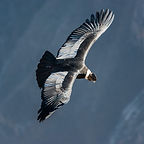Travel advice
Travel advice
Travel advice
Money
Money
Money
Personal safety & security
Personal safety & security
Personal safety & security

Acitivites in Arequipa
We can visit the highlights of this exciting city and travel to the nearby Colca canyon.

CITY TOUR OF AREQUIPA
What we do: We stroll around the city center to explore the city's most interesting attractions. At the market of San Camilo, we find an amazing variety of local produce. In the main square, we see the roman catholic Cathedral; construction was started in 1540 but it has been partially destroyed in several earthquakes over the last 500 years, the most recent was in 2001, when both towers were demolished in a 8.1 quake. In the museum of Andean Sanctuaries, we find exihibits showing the Inca practice of child sacrifice, the frozen bodies of young children were found on the highest peaks around Arequipa and are though to have been killed as offerings to the mountain gods. The body of Juanita, a 13 year old girl, was particualrly well preserved and it is display in a special frozen cabinet. Finally, we explore the convent of Santa Catalina, the home for a dominican closed order of nuns. Founded in 1579, it once houses 450 nuns, servants and workers. In practice it was an independent precinct with its own streets, lodgings, church, kitchen, and laundry.
What to bring: We walk around the city center so you need comfortable walking shoes. Rain showers in Arequipa are very rare, but a sun hat and sunblock are essential. A little water is a good idea due to the altitude and a camera for the outdoor locations and the convent.

COLCA CANYON
What we do: Located 160 km (100 miles) north-west of the city of Arequipa, the drive to the canyon takes 4-hours, over the wild plains and past volcanoes takes. It takes adventurous travelers over the Patapampa pass which is a breathless 4850m (16,000ft.) in altitude, before descending into the town of Chivay at 3650m (12,000ft.), where most of the hotels are located nearby. Above Chivay, agriculture gives way to livestock raising, principally alpacas and llamas, with some sheep and dairy cattle in lesser numbers. Below Chivay the valley houses densely terraced landscapes, continuing for many kilometers downstream. In the valley around Huambo, the valley has a depth of 3,270m (10,730ft.) from river bed to nearby mountain peaks, therefore it can be considered one of the deepest canyons in the world. The canyon is home to the Andean condor, a species that has been the focus of worldwide conservation efforts. The condors can be seen at close range as they fly past the canyon walls each morning and afternoon. We go to the 'Cruz del Condor', a look-out point which is a great option to observe the condors, here we can see the canyon floor is 1200m (3,900 ft) below the rim of the canyon, as we wait for these great birds to glide past your camera lens. We can explore unspoilt local villages and make time to go to one of the many thermal springas before returning to Arequipa of traveling on to Lake Titicaca.
What to bring: At these high altitudes, UV rays are extremely strong, so you need to be well protected from the sun. Bring comfortable walking shoes as we can do a few short walks. We do not see much rain in this region, but the nights are very cold, so you need to be prepared with plenty of layers of clothing. If the Colca canyon is your first destination at altitude, then painkillers for a headache and travel sickness tablets for nausea might be useful to combat any mild symptoms of altitude sickness. You should also be prepared to drink plenty of water.

STONE QUARRIES
What we do: A 20 minute drive from the city center takes us to the stone quarries at Añashuayco. It is here that a soft volcanic stone called tuff or locally known as sillar is quarried. It is derived from compacted volcanic ash and has been used for years in Arequipa as a basic building material. Its pale colour gave rise to the city's nickname as the white city. It is tough work for the local labourers as they cut and carry the stone by hand. With your guide, you can get an insight into life of the quarrymen, an art which is slowly dying out with the onset of newer technologies. As well as see the common day life of the inhabitants who live on the edges of town, well away from the hotels and restaurants of the city center.
What to bring: We spend much of the time outdoors, so bring sunblock, water and comfortable walking shoes.